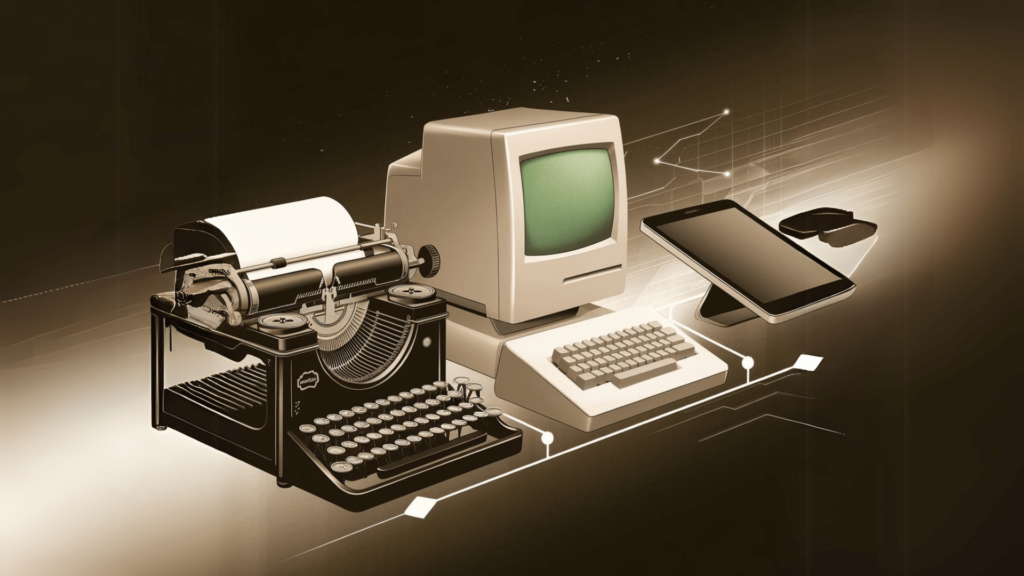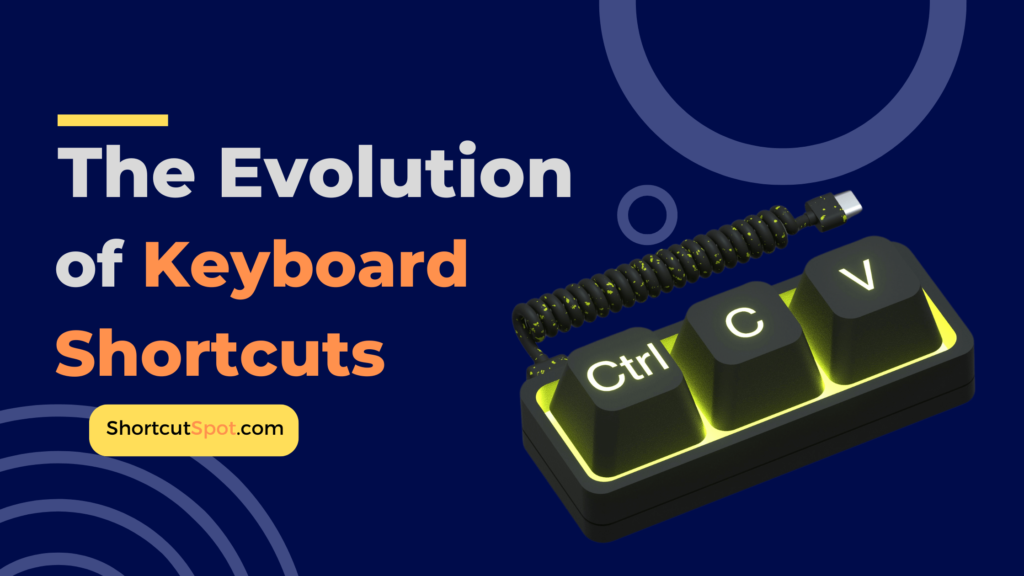
Imagine a world where every action on your computer required a manual process—no quick copy-pasting, no undo button, no keyboard shortcuts to speed things up. Sounds frustrating, right? Yet, before the digital revolution, efficiency was dictated by typewriters and manual inputs, with little room for seamless edits or rapid execution.
Today, keyboard shortcuts have become second nature, transforming the way we interact with technology. Whether you’re navigating an operating system, formatting documents, or streamlining your workflow, these key combinations are the secret to productivity, speed, and accuracy. But how did we get here?
From the clunky typewriters of the past to modern touchscreens and voice commands, the evolution of keyboard shortcuts tells a fascinating story—one that reflects the rapid progress of technology and the ever-growing demand for efficiency. In this deep dive, we’ll explore how shortcuts have shaped the digital landscape, uncover their impact on user experience, and even take a glimpse into the future of hands-free computing.
Ready to unlock the full potential of your keyboard? Let’s dive in!
The Origins of Keyboard Shortcuts: A Revolution in Efficiency
Have you ever wondered how we went from painstakingly typing every command to effortlessly executing actions with a few keystrokes? The story of keyboard shortcuts is deeply rooted in the evolution of technology itself, bridging the gap between early typewriters and today’s ultra-responsive digital interfaces.
The Typewriter Era: Mechanical Efficiency in Its Earliest Form

Before computers, typewriters dominated offices and personal workspaces. While they lacked the digital user interface we rely on today, early typists developed their own “shortcuts”—manual tricks to improve speed and accuracy:
- Using the Shift key to quickly capitalize letters without retyping.
- Employing the backspace (when available) to correct errors without starting over.
- Mastering fluid, rhythmic keystrokes to minimize pauses and maximize efficiency.
Though these weren’t true key combinations, they laid the groundwork for the productivity hacks we now take for granted.
The Birth of Digital Shortcuts: Computers Change the Game

The introduction of computers revolutionized the way we interact with text. Instead of just typing, users needed ways to navigate, edit, and manage content efficiently. Enter the era of cut-copy-paste, a trio of shortcuts that transformed digital work forever.
- The First Cut-Copy-Paste Commands: Inspired by physical text manipulation, these functions became staples in early operating systems like Apple’s Lisa and Microsoft’s Windows.
- The Undo Breakthrough: No more irreversible mistakes—users could now quickly correct errors with a simple shortcut.
- Command Key & Control Key: Different systems introduced their own modifier keys, leading to universal standards across various software platforms.
As software grew more sophisticated, so did keyboard shortcuts, evolving beyond basic text editing to include advanced workflow optimization and customization.
Why Keyboard Shortcuts Became Essential
So why do we still rely on shortcuts in an era of voice commands and touchscreen gestures? The answer lies in their unmatched benefits:

✅ Increased Speed – Executing tasks instantly without reaching for the mouse.
✅ Enhanced Accuracy – Reducing errors caused by manual navigation.
✅ Better Time Management – Shaving seconds off each task, which adds up over time.
✅ Optimized User Experience – Providing seamless, intuitive control over software and tools.
From typewriters to computers and beyond, the journey of keyboard shortcuts is one of continuous innovation. And as technology advances, so too will the ways we interact with our devices.
But how have shortcuts evolved beyond traditional keyboards? In the next section, we’ll explore their expansion into gaming, mobile devices, and industry-specific applications. Stay tuned!
The Future of Keyboard Shortcuts: What’s Next?

From the mechanical typewriters of the past to today’s AI-powered devices, keyboard shortcuts have continuously evolved to enhance productivity, efficiency, and user experience. But as technology advances, will we still rely on traditional shortcuts, or will they be replaced by smarter, more intuitive solutions?
Think about it—voice commands, touch gestures, and AI-driven automation are rapidly reshaping the way we interact with our computers and software. Yet, even with these innovations, shortcuts remain a fundamental part of digital workflow optimization. Why? Because they provide speed, accuracy, and customization that even the most advanced interfaces struggle to match.
But the real question is: Are you using them to their full potential? Whether you’re mastering general shortcuts for everyday tasks or diving into project editing and text formatting for specialized work, optimizing your shortcut game can be a game-changer for your time management and overall typing skills.
As we look ahead, the next generation of keyboard shortcuts may not be tied to physical keys at all. Imagine AI-powered micro-habits that anticipate your actions, gesture-based controls that eliminate the need for complex inputs, or even neural interfaces that execute commands with a thought.
One thing is certain—shortcuts, in one form or another, will always be at the heart of digital collaboration and customization. So, why not start mastering them now? After all, the faster you work, the more time you have for the things that truly matter. 🚀
Are you using the most effective keyboard shortcuts? Keep exploring and optimizing your workflow with ShortcutSpot.com to stay ahead!
